Networking and Tourism Management in Croatia Seen as Unsatisfactory - Survey
ZAGREB, 25 Jan 2022 - Croatians think that the existing networking between tourism and the rest of the economic sector, the quality of tourism management and the inclusion of the local population in its development are not satisfactory, but also that tourism does not have many negative effects, a survey shows.
The survey of views of local population on tourism was carried out by the Ministry of Tourism and Sport as part of the preparation of a strategy for the development of sustainable tourism for the period until 2030. It covered 1,166 respondents from all counties and the City of Zagreb.
Apart from being dissatisfied with the level of networking between the tourism industry and the rest of the economic sector, the quality of tourism management and the inclusion of local people in its development, respondents also cited the problem of a labour shortage and the insufficient marketing of locally produced food and drinks through tourism.
About 33% of those interviewed said they are not happy with the state of tourism in their county, 35.3% said that the situation is satisfactory, and 51.3% described the situation with environmental protection in their county as satisfactory or very satisfactory.
Slightly over half of the respondents, or 53.4%, said that the development of tourism helps keep young people in the country, 52.2% said that tourism has attracted additional investments to their county and 53% said it has created new jobs.
Respondents also noted that tourism has prompted upgrades to municipal and transport infrastructure, and that local people and businesses have economic benefits from the tourist industry. 59% said that tourism helps increase awareness of the importance of environmental protection and 56% said that tourism encourages the protection and improvement of the quality of the environment.
A majority of those interviewed, or 75.5%, said that tourism encourages the production of local food and drinks, and a similar percentage noted that tourism also promotes the conservation of cultural heritage.
Over 64% of the respondents said they do not agree that tourism jeopardises the quality of life for the local population or that it leads to increased rates of vandalism, crime and drug abuse.
Nearly 42% said that tourism is the reason for traffic congestion and overcrowding, and 44.5% identified uncontrolled building as a problem.
Among the negative effects of tourism, respondents cited increased costs of living.
An analysis of the present situation has identified ten key challenges facing the Croatian tourism industry - seasonal and spatial imbalances, the impact of tourism on the environment and nature, the relationship between tourism and climate change, adjustment to accelerated technological change, the quality of life and wellbeing of local population, insufficient human resources, inadequate accommodation capacity, an unfavourable business and investment environment, an insufficiently effective legal and management framework, and the impact of crises on tourism and changes in tourist behaviour and needs.
Croatia Reports 51 COVID Deaths in Last 24 Hours
ZAGREB, 25 Jan 2022 - Croatia has recorded 8,471 new coronavirus cases based on PCR testing and 51 deaths in the last 24 hours, the national coronavirus response team reported on Tuesday.
On the other hand, media said that 8,221 cases confirmed by rapid antigen tests should be added to this number, which would put the total tally of new infections in the last 24 hours at 16,692.
According to the national coronavirus response team, currently there are 58,866 active cases in Croatia. Among them are 1,951 people who are being treated for COVID-19 in hospitals, including 200 placed on ventilators, and 39,228 people are self-isolating.
Since 25 February 2020, when the first case was confirmed in the country, 887,362 people have contracted the novel virus, of whom 13,502 have died and 814,994 have recovered, including 6,627 in the last 24 hours.
To date, 4,132, 532 people have been tested, including 18,320 in the last 24 hours. A total of 5,052,469 vaccine doses have been administered, with 56.42 per cent of the total population, or 67.15 per cent of the adult population, having been vaccinated.
As of Monday, 2,289,548 people have been vaccinated with at least one dose and 2,198,127 of them have been fully vaccinated, which is 64.63 per cent of the adult population.
Croatia's Exodus: What Some Cities in Croatia are Offering Young Families to Stay
January 25, 2022 - When the results of the 2021 Census were revealed on 14 January 2022, reactions were swift and varied. For the first time in over 70 years, Croatia’s population dipped below 4 million to hover around 3.88 million inhabitants (DZS). Since gaining independence in 1991, Croatia has been an exodus of almost 19% of its population, or 895,736 residents.
A closer look at the data reflects the greatest outflow of inhabitants are between the ages of 20-59, drawn to other European countries with richer labor markets and higher wages. This decline is exacerbated by lower birth rates and an aging population. Croatian women now have fewer children, with a birth rate of 1.44 children per woman, well below the 2.1 needed to grow the country’s population. Simultaneously, Croatia has also experienced a 13.6% increase in inhabitants aged 60 and up over the last decade.
To counter these effects, cities across Croatia have implemented a range of social and economic measures to entice citizens, particularly the younger generation, to stay and thrive. We take a look at a handful of cities across Croatia and the benefits they offer.
Zagreb
Over a quarter of Croatians live and work in Zagreb. Since 2009, the City of Zagreb has introduced a series of measures to make the city more attractive for its inhabitants. According to their model (“zagrebački model pronatalitetne politike”), parents receive financial support for newborns amounting to 3,500 kuna for every child. From the third child onwards, an additional monthly bonus is paid until the child turns 6 years old, amounting to a total of 54,000 kuna.
After-school care is subsidized and scholarships are awarded for gifted students and those of lower socio-economic backgrounds. All students up to a secondary school level are also provided free transportation and textbooks. The city is also looking to further extend these measures to include tax breaks for teachers and scholarships holders. Together, they cost the city approximately 1.072 billion kuna annually.
Rijeka
According to recent headlines, the City of Rijeka is increasing efforts to boost its population. Karla Mušković, the head of the city Department of Health and Social Welfare, said the City is doubling financial support to new parents by awarding them 3,000 kuna for the first child, 4,000 kuna for the second and, for the third child onwards, 6,000 kuna.
An additional 2,000 kuna in vouchers will be awarded to low-income families, single parents, as well as parents suffering from disabilities from the Homeland War. Students and children of veterans missing, detained or perished will also receive a one-off payment of 1,000 kunas in financial aid. The city has also set aside 12 million kunas in this year’s budget to subsidize rising electricity costs for the vulnerable. The total cost for these extended measures is 22 million kuna.
While generous, how do these measures stack up with smaller cities across Croatia?
Vis
Surprisingly, Vis offers one of the most generous policies in Croatia. As of 2016, Vis provides a bonus of 10,000 kuna for the first 2 children. From the third child onwards, parents are given a hefty 146,000 kuna. This is broken down to an upfront sum of 20,000 kuna, with a monthly annuity of 1,200 kuna until the child reaches 10 years old.
Novi Vinodolski
First-time parents are given a sum of 10,000 kuna per child. Additionally, the city also plans for additional subsidies to young families for repayment of housing loans, given the inflation of housing prices due to tourism.
Crikvenica
For Crikvenica, parents with 3 or more children receive 30,000 kuna per child. Mayor Damir Rukavina’s government also enacted a series of measures to combat rising housing costs. In 2007 and 2019, building restrictions were passed to limit construction zones and building plot sizes within the city.
Vukovar
The City of Vukovar rewards 1,000 kuna for the first child, 2,000 kuna for the second child, and 5,000 kuna for the third and each subsequent child. On top of this, Vukovar also co-finances housing costs for families with three or more children, subsidizing bills for water, electricity, heating and waste collection.
Imotski
In 2019, the City of Imotski increased the financial aid for newborns ten-fold. As of 2019, parents will now receive 10,000 kuna for the first child, 20,000 kuna for the second, and 50,000 kuna for the third and subsequent child. These measures make up almost 1.25 million kuna in the annual budget.
While government measures are certainly helpful to alleviate this situation, private businesses can also play a significant role. For example, DM has rolled out significant incentives to ensure their employees thrive in the workplace. In 2019, they increased the bonus given to new parents from 3,000 kuna per child, to 10,000 kuna, while new parents are encouraged to make use of their flexible shift system to ensure proper work-life balance.
For more, check out our dedicated lifestyle section.
Adopting the Euro and Everyday Prices: What Can Consumers Expect?
January 25, 2022 - This year will mark the introduction of the Euro (€) in Croatia, two years after participating in the exchange rate mechanism since 10 July 2020. This set the exchange rate at 1 euro = 7.543450 kuna, with a band of fluctuation of 15%.
From September 5 onwards, retailers throughout the country should display dual prices with both kuna and euros. This measure will extend until the end of 2023.
According to the Croatian media, reactions from the general public surrounding the adoption of the Euro is one of hesitancy. Many fearing the adoption of the Euro may bring on additional inflationary prices.
This sentiment is understandable considering the country is also facing one of the highest year-on-year inflation of 5.5% (DZS).
The same fears were also expressed when 12 countries adopted the Euro in 1999. As many as 80-90% of consumers in Austria, Finland, Portugal, Netherlands, Greece, Germany, and Spain believed that prices were higher after the adoption.
But what could have led to these beliefs in euro-related inflation?
One reason is that consumers use approximated exchange rates for ease of conversions. For example, it can be more intuitive to use a rate of 8 kuna to 1 euro compared to the real rate, distorting inflation by about 6%.
Another, perhaps more calculable concern, is due to something called the rounding effect. This occurs when prices are replaced with more attractive, higher price points that frequently end with numbers 0, 5, or 9.
But are these fears justified, especially for the consumption of everyday goods? Responses from experts have so far has been encouraging.
Leading Croatian economists and even the European Commission have repeatedly assured the introduction of the Euro will not have significant effects on aggregate price levels. Researchers have also supported these claims, showing Euro-related inflation has a larger perceived (as opposed to actual) inflation on consumer prices, particularly for cheap, frequently purchased goods.
Two common sectors that can be used as examples to determine if, and how, the rounding effect may lead to an increase in average spending for consumers are: the restaurants and cafes sector, and the food and produce sector.
Food and Produce
Table 1 outlines the average price of 10 common everyday household items bought on a weekly basis. Conservative estimates are made based on prices averaged from figures at Numbeo and Prices World.
These figures are based on the assumption that Euro prices are rounded to the nearest attractive price ending with 0, 5, or 9.
Table 1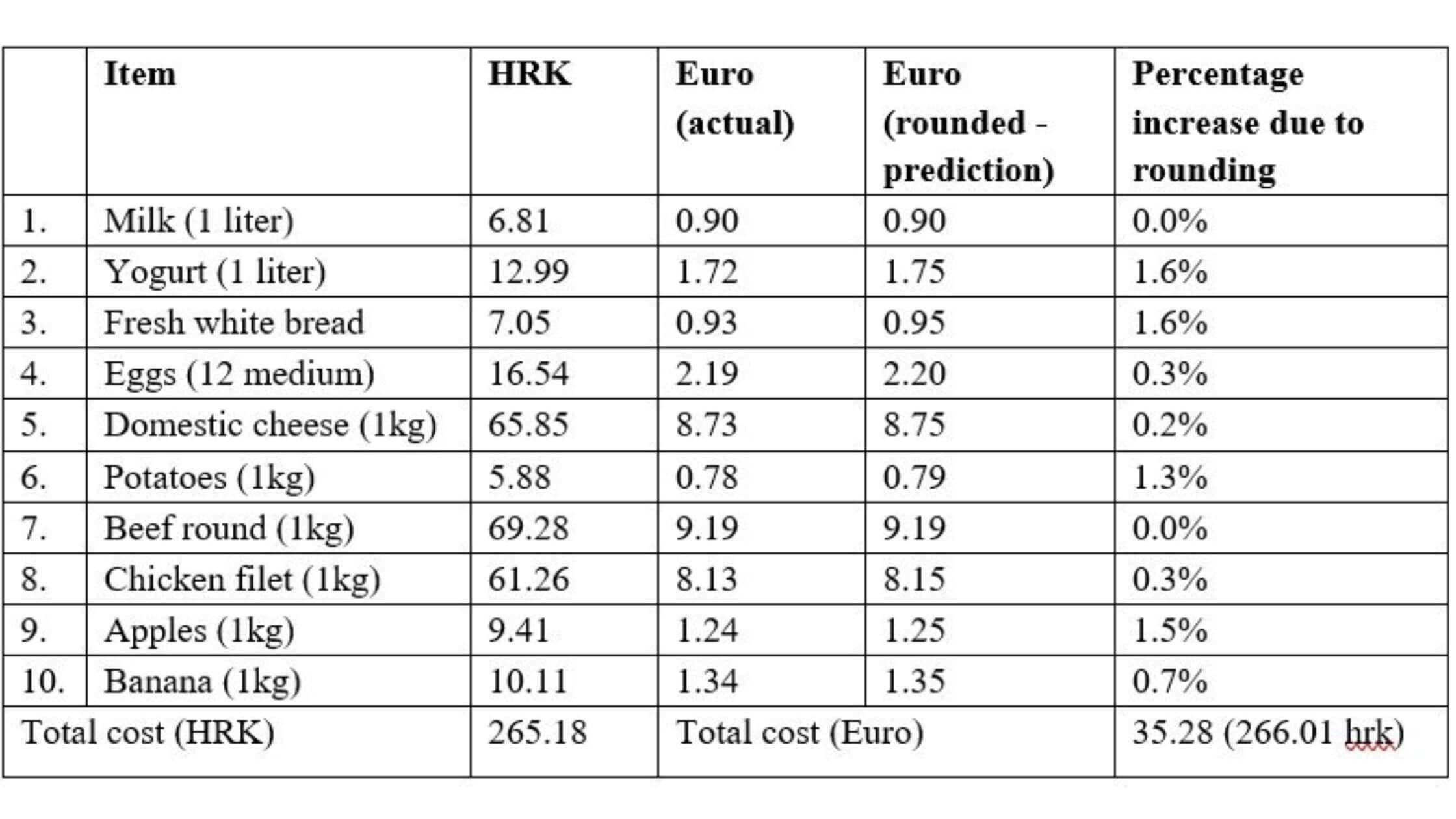
When 12 countries adopted the Euro in 1999, consumer prices saw an increase of 0.12% to 0.29%. Although the increase in the rounding effect in Croatia may be slightly higher in the hypothetical scenario above, in real terms, this is almost negligible. Based on these estimates, the total cost of these weekly goods is currently 265.18 kuna. After the adoption of the Euro, the conservative estimate for the same goods is €35.29 or 266.01 kuna. A difference of 0.83 kuna or a 0.31% increase. While the euro-related inflation for everyday groceries may not burn a hole in consumers’ pockets, what about a common leisure activity, enjoying a drink or meal at a restaurant or cafe bar?
This is likely where consumers would feel more of a pinch.
Restaurants and cafes
Back in January 2002, inflation for the restaurant and cafe industry in countries that adopted the Euro averaged a jump of 15.63%. In the following 3 months, these prices continued to increase at a rate of 5%. This was in contrast to countries that chose not to adopt the Euro, namely Denmark, Sweden, and the U.K. that only saw price increases of 1.01-2.18%.
Although the Euro was adopted by these countries in 1999 as outlined earlier, Euro notes and coins were only introduced 1 January 2002 which explains this trend. Until then, the old notes and coins of each country were still legal tender.
In neighboring Slovenia when the Euro was adopted in 2007, then governor of the central bank, Mitja Gaspari also shared a similar anecdote regarding the increase in coffee prices.
What might consumers expect from restaurants and cafes in Croatia? The following table uses similar predictions based on countries that previously adopted the Euro and includes a rounding effect.
Table 2
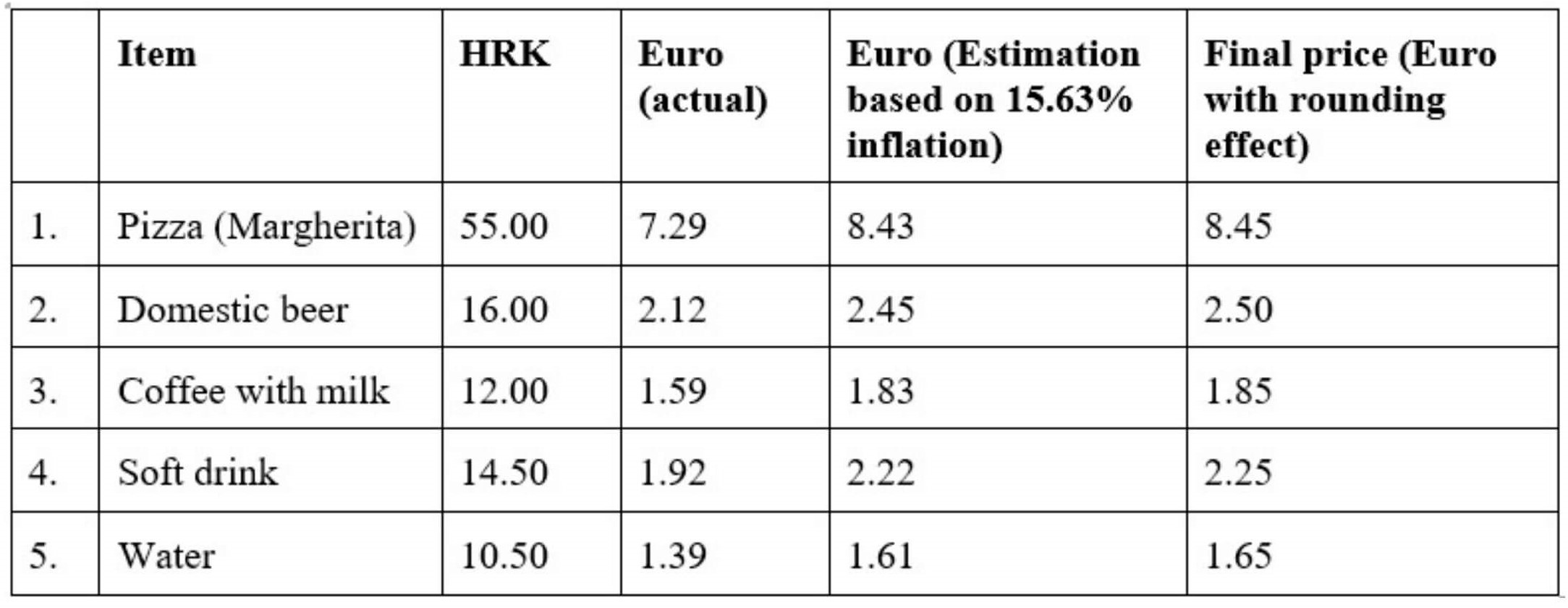
Using numbers from Numbeo and Price World, a meal at an affordable restaurant would average 59 kuna/person. With euro-related inflation, this could go up to 68.22 kuna/person.
The biggest jump is in mid-priced restaurants where an average meal increases from 220 kuna/person to 253.51 kuna/person.
There are a couple of explanations for this large increase in prices for restaurants and cafes, compared to food and produce.
The first scenario may be due to the switch acting as a motivator and coordination device for most, if not all, restaurant and cafe owners to switch to higher prices. This is also made possible through the widespread availability of menu prices online, leading to the rapid diffusion and adoption of a new Euro price point.
A secondary explanation for high inflationary prices can simply be attributed to the increase in anticipated menu costs due to the increase in marginal costs from raw ingredients. Since restaurants and cafes purchase these in bulk, costs accumulate relatively quickly and are passed down to the consumer.
Will these effects last?
The good news is for most euro-adopters in the long run, these spikes were largely temporary as people adjust to the new currency. The Croatian central bank is also giving inhabitants a longer time horizon of over a year to make this adjustment with dual prices lasting through 2023.
For more, check out our dedicated lifestyle section.
Ancient Salona Archaeological Discovery: Peacock Mosaic, Symbol of Eternal Life
January 25, 2022 - Another ancient Salona archaeological discovery reveals a stunning peacock mosaic depicted in early Christian art as a symbol of resurrection and eternal life.
The beautiful ancient mosaics discovered recently in the center of Solin caused a sensation in archeological circles, but also beyond. The probable floor of some Roman villas on the outskirts of Salona may shed new light on the area where the capital of Roman Dalmatia stretched. And not only that, but this is one of the few findings that can show how people lived in Salona, reports T.portal.
Apart from the profession's interest and the work that restorers are currently doing on mosaics, the main issue is the future presentation of one of the critical Salona discoveries in the last few decades. As things stand now, the mosaics will be covered with glass and get a well-deserved place in the future city cultural center, which is why the works that led to the discovery began in that area.
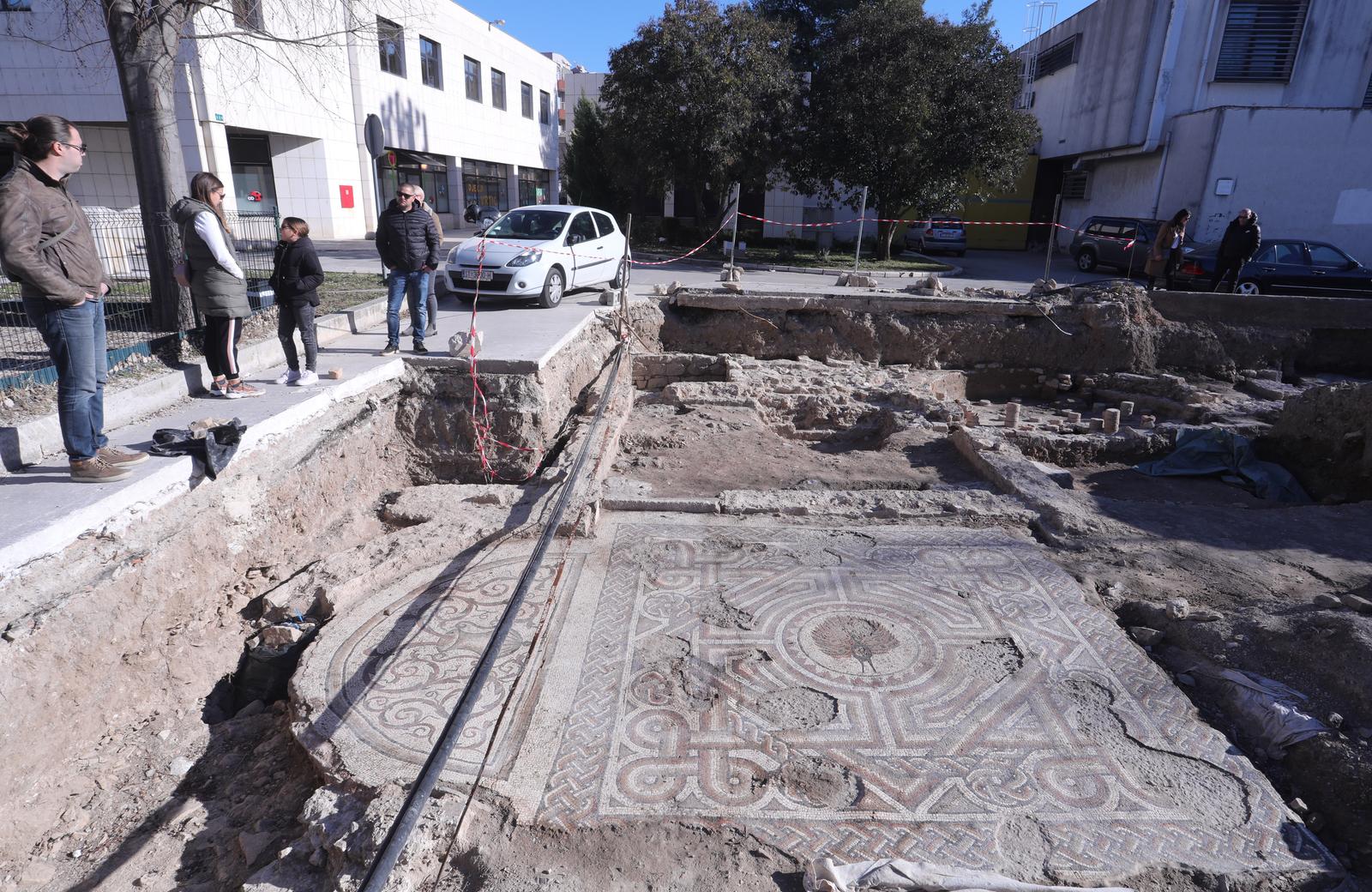
Ivo Cagalj/PIXSELL
With underfloor heating installations and a beautiful small mosaic with flowers, the main discovery is undoubtedly a giant mosaic with more decorative details - an image of a peacock. It may be that the former villa owner, unknown to us today, admired the beauty of this bird. Still, according to some experts, the depiction of a peacock may indicate when the villa was built, i.e., in early Christianity, from the 4th century onwards (Salona was abandoned in the first half of the 7th century). The reason is the significant symbolism of the peacock in the Christian religion.
Peacocks are usually depicted in early Christian art as a symbol of resurrection and eternal life. Such a meaning probably comes from pre-Christian religions, from Greek to Jewish. It was believed that peacock meat did not decay even after death, so they considered it a symbol of eternity. The belief was also passed on to Christians, who portrayed this bird as a sign of Christ's eternal existence. St. Augustine tested this thesis in practice and was surprised at how long the meat remained undigested. In "The State of God," he even wrote about his experiment: "a year later, it remained the same, except that it dried up." These are all reasons why this bird can be seen in catacombs and tombs because it reminds believers of the soul's immortality.
In the Middle Ages, this was supplemented by the fact that the peacock sheds its feathers every year, and new ones grew even more beautifully than before. Legends also said that the beautiful colors of peacock feathers come from food, that is, that a peacock can kill and eat venomous snakes, whose venom 'turns' into miraculous feather colors. It was similar, it was believed then, with Christ: he dies for us on the cross, then rises from the dead by defeating evil by taking divine form, and with healed wounds. It can also be said that the peacock - whose beauty is not always visible - symbolizes a Christian who has attained eternal life by faith and has shown all his greatness by resurrection, just as a peacock spreads its spectacular tail on special occasions. Interestingly, in later times, and even today, the peacock was seen more as a symbol of vanity.
The peacock's tail had another meaning - the 'eyes' at its ends reminded Christians of the God who sees everything. For example, the pillars of Theodosius' Forum in Constantinople, today's Istanbul, were decorated with that part of a peacock's tail.
We can only hope that the announcements about the presentation and (more importantly) preservation of this finding will come true, and that it will not experience the fate of the most famous Salona mosaic, a depiction of two deer drinking water and the inscription 'As a deer longs for a spring of water, so my soul longs, God, for You.' Namely, this mosaic disappeared between the two world wars, and today there are only replicas and paintings.
For more, check out our dedicated lifestyle section.
Hidden Village of Progress: Ivankovo - Great Example of Slavonia Full of Life
January 25, 2022 - There are many obstacles the Slavonia region faced in the last two decades, but one of the most prominent ones is the emigration of young people who do not see a future for them here. However, one particular village in the eastern interfluve of the Drava and Sava rivers in Vukovar-Srijem County stood out from the rest. Meet Ivankovo.
Ivankovo is located in Vukovar-Srijem County, west of the historical city of Vinkovci, along a busy road that has passed through that area since prehistoric times. The design reminds of a typical traditional Slavonian village; the houses are located on long narrow plots, built on a regulation line, and the background is used for agricultural purposes. In addition, there are villages Prkovci and Retkovci, which are also part of the Ivankovo Municipality. Furthermore, its geographical and traffic location connects cities like Đakovo, Osijek, Vinkovci, Vukovar. Also, the motorway A3 Bregana - Lipovac, industrial track, airport Klisa, the port of Vukovar, and neighbouring municipalities Vođinci, Stari Mikanovci, Andrijaševci, Cerna, and Jarmina. Historically, the municipality of Ivankovo was always highly populated (unusual for villages in Eastern Croatia) with, according to the 2011 census, 6,194 residents in Ivankovo, 1,263 residents in village Retkovci and 549 residents in Prkovci. However, the 2021 census showed that the emigration of people, especially young people, did not bypass Ivankovo. Only Vukovar-Srijem County has 19 percent fewer people than ten years prior, with just Ivankovo losing 1,091 residents. These devastating numbers only show how much this part of the country suffered since the Homeland War, and the possible potential Eastern Croatia can offer was neglected for decades. Recently, however, things started to change.
Croatia joined the European Union on the 1st of July 2013 and opened its borders to new opportunities, which was partly a curse if we consider the emigration, but Euro funds all of a sudden became available and small communities and districts like Ivankovo saw the opportunity to use its resources to develop their infrastructure. After the change of the government in 2017, hard work needed to begin. One of the first obstacles elected officials had to face were decrepit institution buildings (school, kindergarten, fire station), sacral objects, financial transactions pointlessly directed at projects that did not make any sense, engaging locals in public events, and keeping young residents and their potential families in the district of Ivankovo. This was only a drop in the ocean, but with the available European funds and fixes in municipalities' budgets, projects of developing neglected villages finally started.
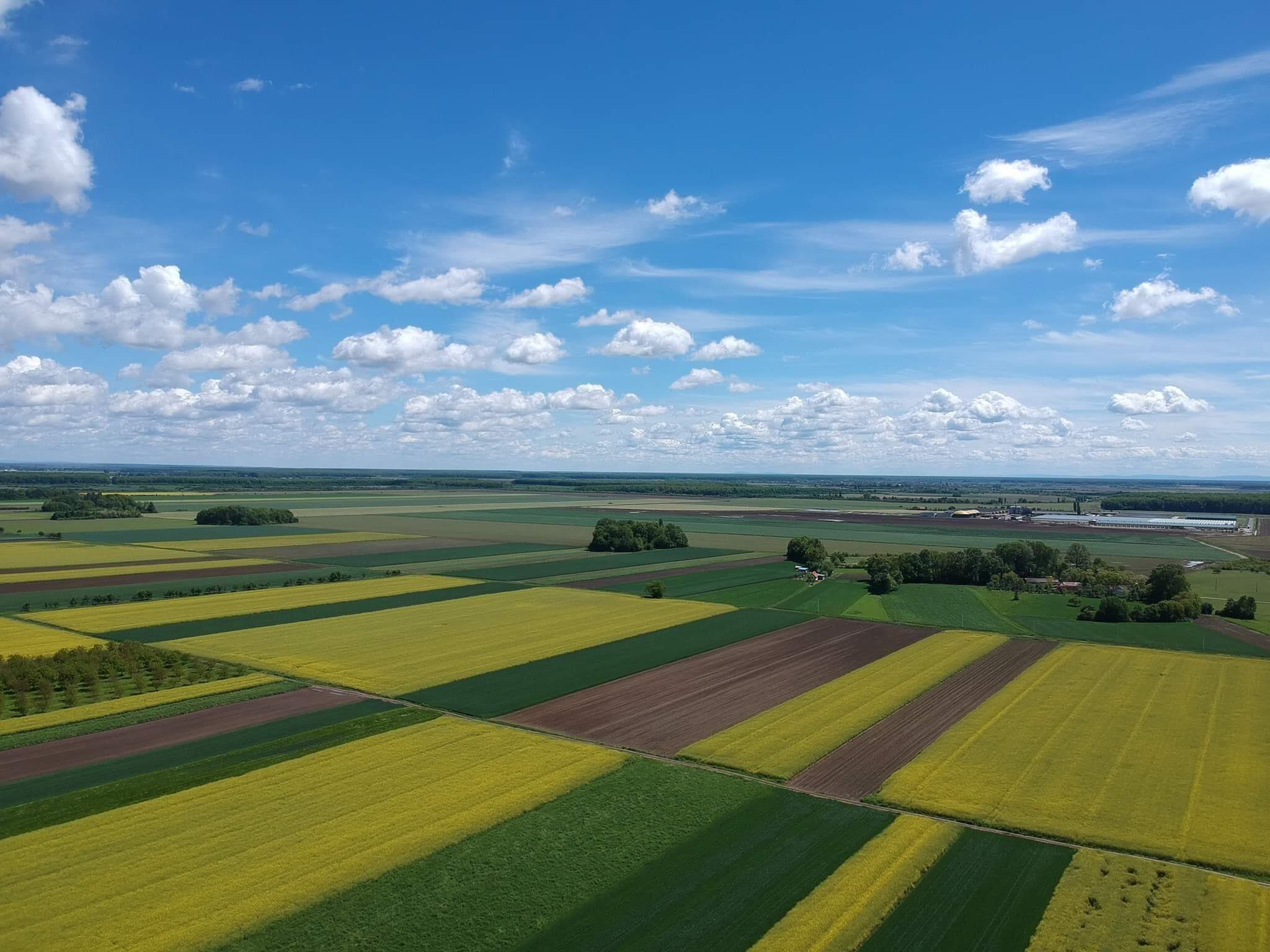
foto: Facebook/Ivankovo.info
The first big project happened at the Industrial Zone Ivankovo, which was, after many years, finally put into function and allowed local entrepreneurs to invest and develop their own establishments. This encouraged employment, of which 70 percent needed to be from the Municipality of Ivankovo.
Local utilities also needed a massive upgrade, so a communal society was formed and today employs 26 people from the Municipality, who take care of the village’s environment every day. Public spaces like children’s playgrounds, parks, and other areas were built and renovated. Furthermore, part of the Revitalization plan included planting 300 trees across the Municipality. The roads have been renovated, built where needed, and the sewer system finally connected with households across the villages of Ivankovo, Prkovci, and Retkovci. Waste management is still a huge problem across Croatia but the local government of Ivankovo, with the help of EU funds, enabled the construction of a recycling yard which highlights the need for sorting and recycling the waste. 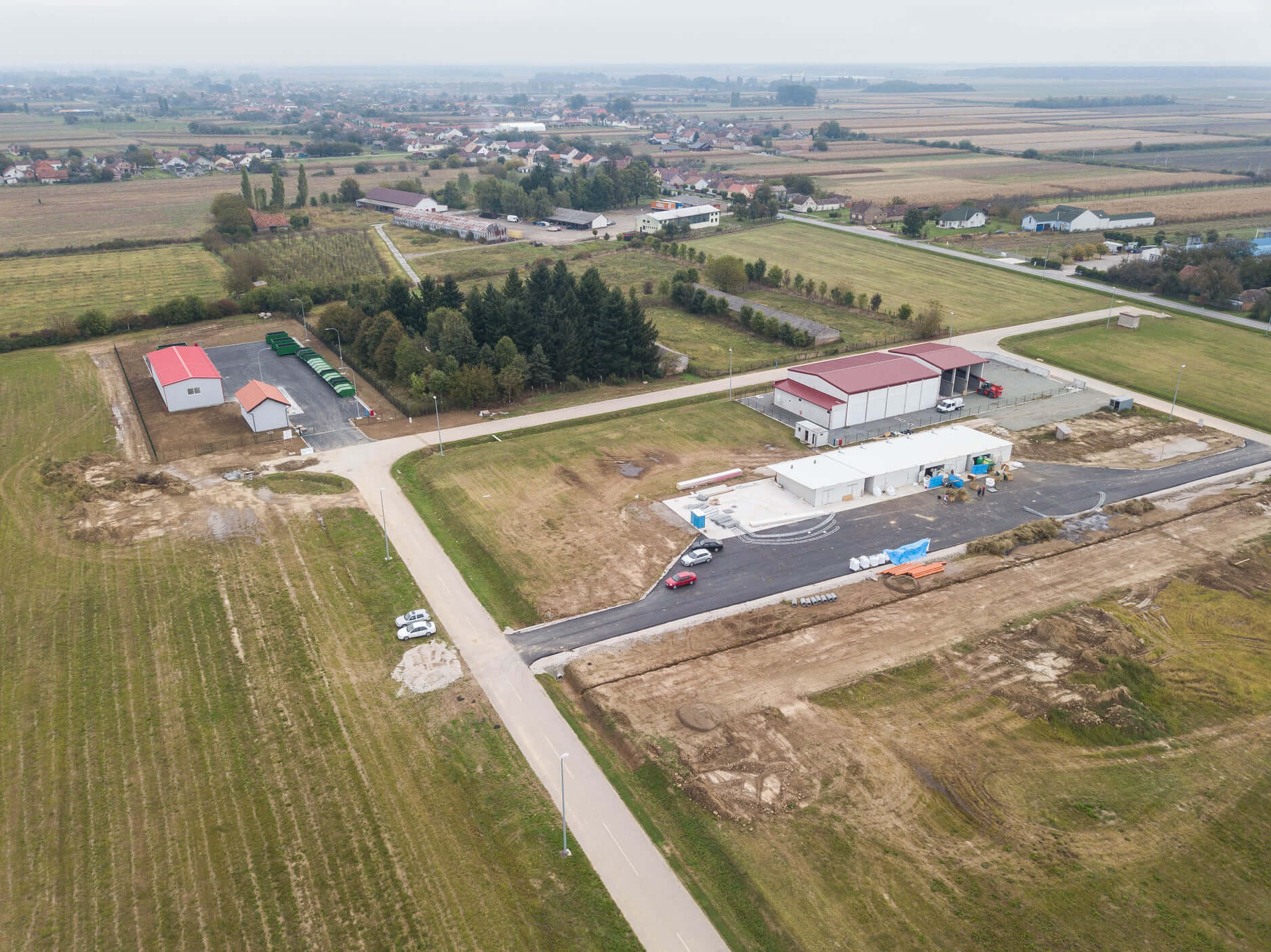
Industrial Zone Ivankovo, foto: Facebook/Marko Miličević - načelnik Općine Ivankovo
Social incentives: co-financing the purchase of houses for young families, infant benefits, free preschool educations, new kindergarten buildings, free student transportation, student scholarships, and other perks of the demographic policy all came into fruition since 2017, and it helped residents of Ivankovo immensely.
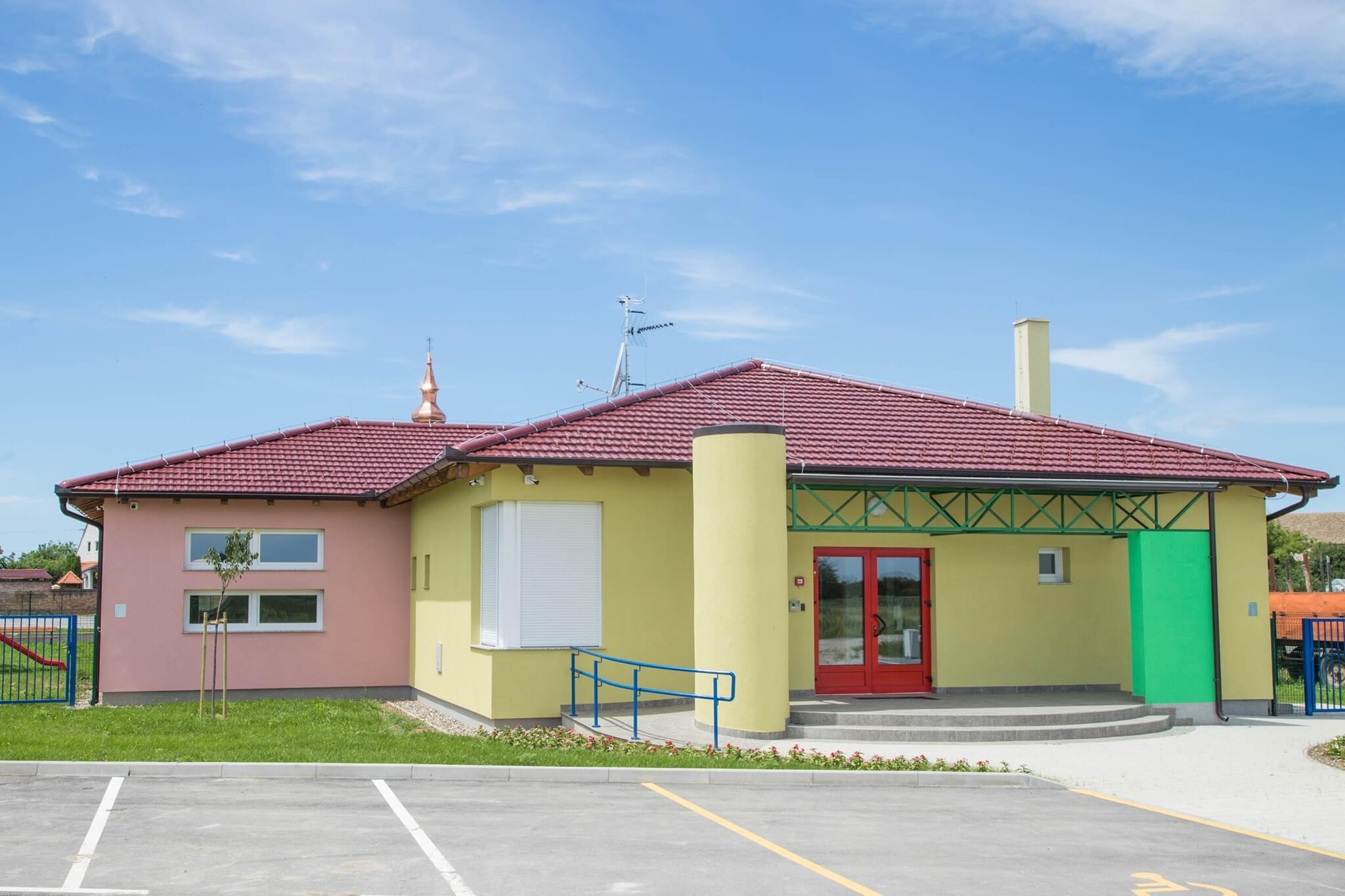
Newly Built Kindergarten Ivankovo, foto: Facebook/Dječji vrtić Ivankovo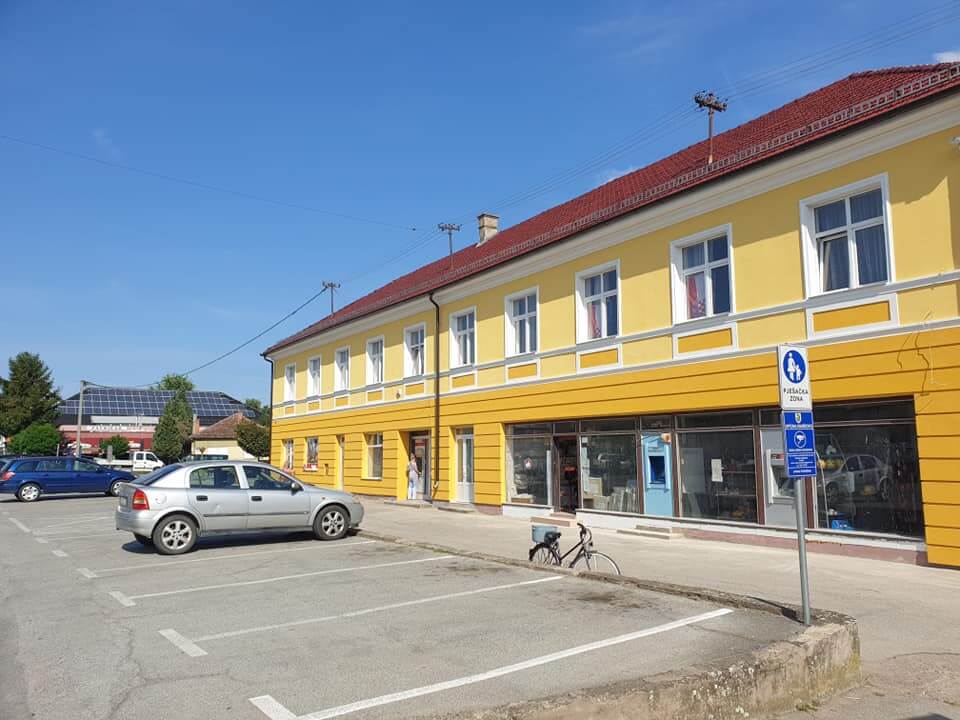
Renovated old government building, foto: Facebook/Marko Miličević - načelnik Općine Ivankovo
This is only a drop in the ocean that shows if people put in a little effort and genuinely care about the development of the community in which they reside, Slavonia can truly be better. When asked about these achievements and progress the Municipality went through the last few years, Mayor Marko Miličević says that “this is only the beginning. It was hard, we had to fix a lot of issues that were rooted here for years, but with the help of my colleagues and finding resources to finance our goals of development of this region, we started something that we can only continue to build on.”
He continues: “The most important part was listening to people, getting to know them again and recognizing their needs because before they weren’t being listened to.”
Plans seem ambitious as well: “This Municipality has so much potential and highly educated people, with more than 100 faculty students every year who are studying economics, IT, electrical engineering and computing, food technology, medicine, etc., which are all the fields that are the future of this country.” he says.
Furthermore: “We have numerous development projects in works that we want to be finished in the next few years: further development of Entrepreneurial Zone Ivankovo, a tourist, sports and recreation center, a retirement home, catering and tourist zone, etc.
Mayor Miličević ends on a hopeful note: “We have achieved the future of development in the Municipality of Ivankovo, and we plan to continue it.” 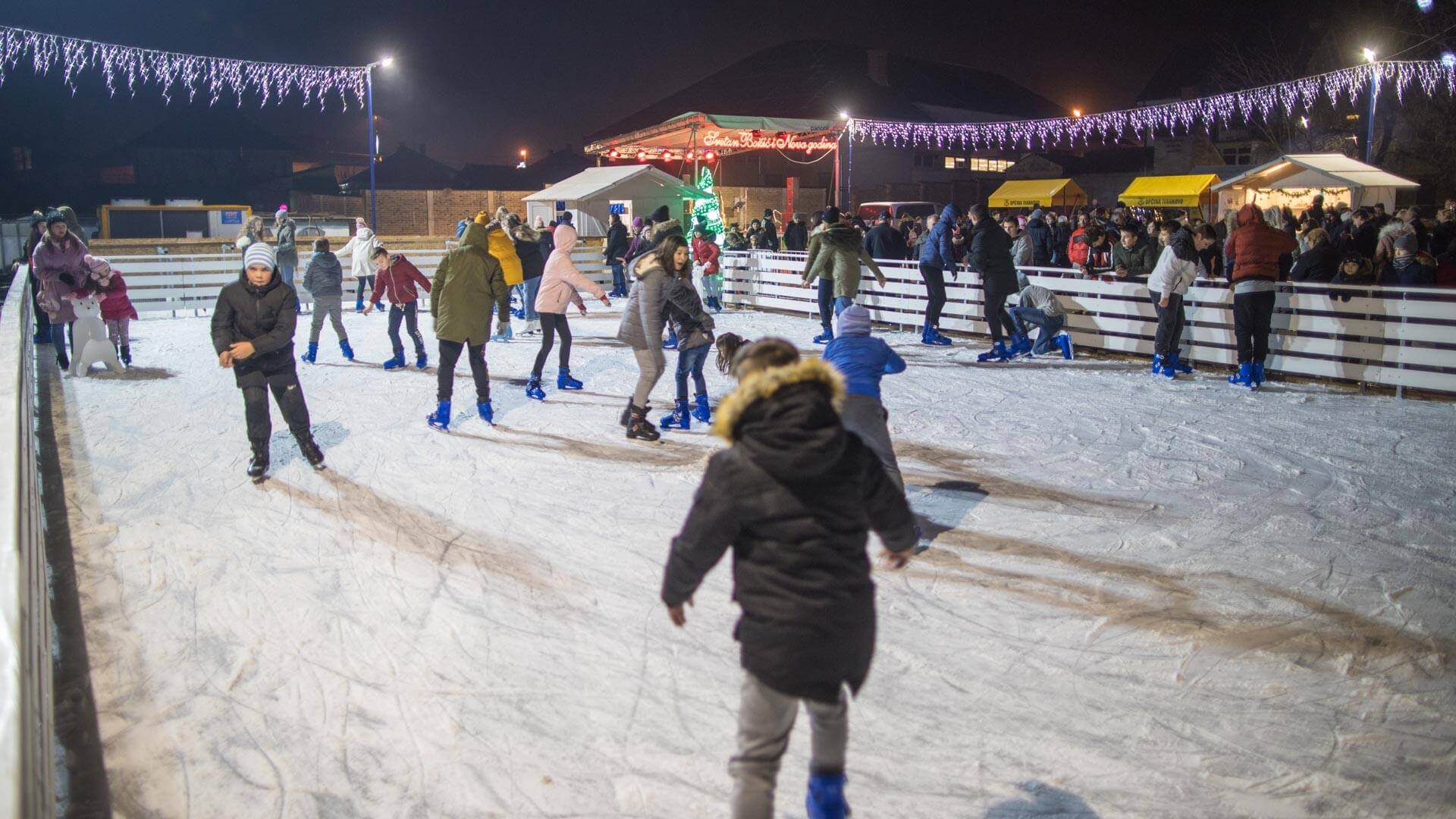
Winter Joys During Christmas Holidays, foto: Facebook/Marko Miličević - načelnik Općine Ivankovo
Sports recreation, social events, concerts, the inclusion of young people in said events, and more only shows that the district of Ivankovo finally livened up and restored a little bit of life that resided here 30 - 40 years ago. Multiple “parasites” wormed themselves in the core of Slavonia and slowly but surely exhausted the region to the limit. People settled for what was enough for them, for what was given to them, and some of them left because they couldn’t see their future here. Generations of high schoolers heard every day that there isn’t a place for them here in Slavonia, that there are many people like them who never found themselves here and had to leave because of it, and that they need to leave as well.
The hope for Slavonians has been stepped on for years, but the current changes slowly every day. Osijek started it, Vukovar and Vinkovci are following it. Still, a village like Ivankovo can only be an example of how much power its residents have and use their potential to make, how one former foreign politician said, Slavonia great again.
For more, check out our dedicatedlifestyle section.
New Isolation Rules in Croatia for Children, Health and Social Care Workers, Asymptomatic Persons
January 25, 2022 - The Croatian Public Health Institute has announced new isolation rules in Croatia for children, health & social care workers, and asymptomatic persons.
The Croatian Public Health Institute has published new recommendations on the treatment of patients, contacts and isolation, and self-isolation.
News about self-isolation applies to children, health and social workers, asymptomatic persons, and persons with a mild to moderate clinical picture.
Change in self-isolation for children
Children up to the age of 18 who have been primarily vaccinated and have recovered and received one dose of the vaccine are exempt from isolation, regardless of how much time has passed since vaccination.
Children exempted from isolation should, during the ten days of close contact with an infected person, minimize contact with people over 60 and people with severe chronic diseases and wear a mask on all occasions when immediate contact is impossible to avoid.
It is also recommended that they take a home test five to seven days after close contact with an infected person. In case of symptoms, they should be tested by rapid antigen or PCR test.
Changes in health and social care
Healthcare professionals and employees in the social welfare system whose isolation has been shortened to seven days due to a previous illness or vaccination should take a quick antigen test before returning to work (PCR can be performed if testing capacities allow) and return to work only after a negative result.
A rapid antigen test (BAT) should be performed if a person develops symptoms. In the case of a positive BAT finding, the person undergoes isolation for at least seven days, with the day of onset of symptoms being counted as day zero.
In case of negative BAT findings, it is recommended to repeat BAT after 24-48 hours. In case of repeated negative results, quarantine should be terminated after seven days, with strict adherence to epidemiological measures and continuous wearing of the mask for the next seven days.
Shortened isolation for asymptomatic persons
Isolation was shortened for asymptomatic persons and persons with a mild to moderate clinical picture who were not immunocompromised for seven days and more than four months after primary vaccination or recovery. HZJZ explicitly states that in this case, we are talking about adults.
The document below shows in detail in which cases you can be exempted entirely from quarantine, and when it lasts seven days:
Postupanje s oboljelima, ko... by Jutarnjiredakcija
For all you need to know about coronavirus specific to Croatia, make sure to bookmark our dedicated section and select your preferred language if it isn't English.
Split Marjan Park Cameras to be Installed in 9 Locations, Free Wifi Planned
January 25, 2022 - It has been a long time coming, but Marjan Park cameras will be set up in nine locations to record and track visitors, with free Wifi for citizens and tourists planned as well.
Marjan Forest Park management intends to set up a system and equipment for recording, tracking, and controlling visitors, as well as a system for public wireless internet access for all park visitors, reports Slobodna Dalmacija.
Two bids were received to procure and install the equipment in Marjan Forest Park. The community of providers "Smartnet" and "Alsace alarms" offers a service of 739 thousand kuna, and the company "Securitas Croatia" made an offer of 745 thousand kuna.
According to the cost estimate, the visitor monitoring system and internet access would be set up in nine locations: the northern Marjan Gate, the southern Marjan Gate, the "Water Reservoir" entrance, Bene, Sedlo, Telegrin, the Botanical Garden, the Zoo, and the First Lookout.
Slobodna Dalmacija spoke to the acting Director of the Public Institution, Stipe Mušura, about how the new cameras would work.
"This would be about the same as in other protected areas, a camera that records the entry of visitors. Pure electronics are at stake. We have examples in other protected areas, this is nothing new," Mušura said.
However, when asked if they would be identification cameras, which will be able to determine the identity of the visitor, Mušur said that he did not know and that it was only important for them to install the devices.
"The public procurement procedure is ongoing. Upon completion we will give the required answers," he added.
Slobodna Dalmacija also learned that public access to the Internet on Marjan would not be charged, and as Mušura said, "it would be a free support for citizens and tourists".
This is great news for everyone in Split!
For more, check out our dedicated lifestyle section.
Croatian 2022 Season Lacks 35,000 Workers, Some Hotels May Not Open
January the 25th, 2022 - It might seem like we're far from the sweltering heat of summer and an influx of tourists at the moment, thanks to the temperatures and the weather, but the Croatian 2022 season will be here before we know it. As many as 35,000 staff are required and apparently are struggling to be found, leading some facilities such as hotels to perhaps not even bother opening their doors this summer.
As Novi list/Alenka Juricic Bukarica writes, there will be an estimated shortage of between 30,000 and 35,000 tourism employees for the Croatian 2022 season. The problem of labour shortages escalated last year when some hotels, and not only those of lower category, didn't bother to open their doors during the main summer season because there were no employees who would work the season to be found.
The tourism sector therefore calculated that around 800 million kuna more revenue could have been generated if they had been able to hire labour under more relaxed conditions.
Most of the Croatian tourism sector, with the exception of, for example, travel agencies, no longer have job preservation measures introduced in 2020 available for their employees, which is why the sector launched a series of proposals back in early autumn, immediately after the season, to alleviate the problem of staff shortages and to further facilitate employment. The sector also expects the labour market test obligation to be scrapped.
The problem of waiting for work permits for third country nationals
The 2021 Croatian census showed a sharp decline in the number of inhabitants of the country, and thus the working population, and in the conditions of the pandemic, the trend of local workers going abroad increased, meaning that the already insufficient pool of domestic labour was further emptied. As expected, the Croatian 2022 season will come with great demand for staff from other, mostly neighbouring non-EEA/EU countries, but also the Philippines, India and Ukraine.
Last year, when it came to hiring foreigners, employers ended up having to wait for several weeks to get valid work permits for their staff to that they could work legally, and waiting for even one month during the height of the busy tourist season is unrealistic.
According to the Croatian Employment Service (CES), two thousand and 463 waiters, two thousand and 101 chefs and 689 maids were registered at the bureau at the end of December. According to the same institution, a total of 235,219 workers were wanted for last year's season, of which 27,792 were seasonal workers.
Out of a total of 27,792 sought-after seasonal workers, most were in Istria, Split-Dalmatia, Primorje-Gorski Kotar and Dubrovnik-Neretva counties. When it comes to labour market tests, in 2021 - 28,838 workers were in demand. Thus, work permits were issued to more than 2,000 cleaners from abroad, about 1,700 foreign waiters, 1,300 assistant cooks, about 1,200 cooks, and about 700 hotel maids.
The highest number of requests for the labour market test was received by the Zagreb Regional Office, amount to around 8,500, while Pula is in second place with about 6,800 such requests, and Rijeka is in third place with about 5,400 requests. It's worth mentioning that back during the record-breaking year of pre-pandemic 2019, about 20,000 seasonal workers from abroad were employed in the Croatian tourism sector.
Crisis reactions
Commenting on the situation with staff in tourism last year and this year, Marina Cvitic, the president of the Trade Union of Istria, Kvarner and Dalmatia (SIKD), pointed out that in tourism, it is more than necessary to specifically increase salaries, all the more so given the situation with inflation.
''This was the biggest mistake employers in tourism made at a time when there were staff to be hired. There were enough of them, and the employers had enough money and they could have financially increased the salaries of their employees. Now they have less money, and they give bigger increases than when they did have money. But, unfortunately, there are no staff now. It's a vicious circle. Now, salaries should be increased by at least 50 percent in order to get people to come back,'' she warned.
She added that today anyone who is healthy can find a job. It might not be a quality job, but it will be enough to get by. People don't leave Croatia because there is no work, but above all to find better jobs and more stability. Last year, she said, the staffing situation became very difficult.
''On the one hand, I understand why it was how it was. Employers couldn't plan in time because the pre-season was marked by lockdowns, and until the very beginning of summer, it was practically unknown whether there would be a tourist season at all. Then in June everything started again rather abruptly, and of course all those who weren't invited to come here to work until June, had been looking for a livelihood elsewhere. A large number of workers who would otherwise have decided to work in Croatian tourism went and did other things, usually being engaged in the construction or trade sectors. Wages in these industries increased, so tourism offered low incomes in relation to them. Therefore, without a concrete increase in salaries, I'm afraid that there will be no progress for the Croatian 2022 season and that part of the facilities will remain closed once again due to lack of staff,'' said Cvitic, adding that now is the time to negotiate the price of labour for the upcoming tourist season.
This time last year, the negotiation was to reduce, not increase wages, because there was no need for workers. During the season, through non-taxable awards and other things, they tried to compensate for that.
As for foreign workers, Cvitic revealed, they were really from everywhere, from Nepal, Brazil, Argentina, India, to the Philippines to Ukraine.
''From those countries where it is worse than it is in this country, things are easier, on top of that, Croatia is actually just a stop on their way to Western European countries. The problem is that this type of employee, when in contact with the guest, cannot provide the service that a person who lives here and who is representing this country can do. Croatian are known for their quality and professionalism, and unfortunately we're in a situation in which we educate quality staff, invest in their education and practice, and then those people go to work elsewhere. This is clearly indicated by the latest census data. Personally, I expected that there would be no decline in Istria, precisely because of the progress in tourism, however, the peninsula didn't remain immune to this negative trend,'' concluded Cvitic.
LRH: We are raising the standard for employees
Liburnia Riviera Hotels (LRH) also touched on the Croatian 2022 season staffing issues, said that this year, they will need about 600 additional employees.
''We always need waiters, cooks, receptionists, maids... We'll also need additional strength in other areas. On a smaller scale, we'll also hire staff for some specific positions such as lifeguards, gardeners or handymen, as well as people to come and work in administration. The search for new human resources has already begun. We believe that it is very important to start the search in time to find the best employees, especially given the poor market situation,'' they said.
Initial talks with potential future employees for the Croatian 2022 season, as well as negotiations with some key partners in the recruitment process (employment agencies) began late last season, they said from LRH, adding that they offer employees competitive market conditions with adequate accommodation and food, as well as working continuously and intensively to improve overall working conditions and raise standards in all aspects of employee relations.
Jadran/Adriatic: Scholarships and a stable job
''Considering the situation on the labour market, primarily starting from the ambitious plans for next year, activities related to the labour force haven't stopped for this company.
As of September the 1st last year, a total of 46 employees received indefinite contracts, and some of them had their contracts extended for another year, meaning that Jadran now has 165 full-time employees, an increase of 12 percent compared to the same period back in 2019,'' said Lucija Jukic, the director of sales and marketing of Jadran Crikvenica.
She added that, in addition to continuously advertising the need for labour force and cooperation with the CES, Jadran will also perform at the upcoming virtual job fair Sezonac.hr.
In agreement with the High School in Crikvenica, the Faculty of Hospitality and Tourism in Ika and the PAR Business School in Rijeka, Jadran applied to the programme of the Ministry of Tourism and Sport for scholarships for students studying for tourism professions for which employment approval has been obtained, adding nine new scholarship recipients into the mix.
''Unfortunately, due to technical difficulties, we had to abandon the planned, year-round operation of the Boutique Hotel Esplanade, which was to become a centre of excellence, but we're glad to announce the opening of Hotel Lisanj, which will begin working on February the 11th and will not close until the end of the year. Jadran will also employ another 450 seasonal workers during the Croatian 2022 season,'' concluded Jukic.
Valamar: Permanent job and awards
The largest tourist company in Croatia, Valamar Riviera, says that this year, according to the plan, about 7,000 employees from Istria to Dubrovnik will work in their facilities.
''An additional advantage of working at Valamar is the possibility of working in our hotels in Austria during the winter months. After their first season working here, employees can enter the permanent season and have a seasonal job, with year-round income. Last autumn, Valamar started with the selection and employment for the Croatian 2022 season within the Good Job at Valamar programme and invited all those interested in developing a career in tourism to apply for a job with us.
During the COVID-19 crisis, Valamar, with the support of social partners and government measures, preserved all jobs through the Pause, Restart programme, which last year enabled the realisation of a solid tourist season, and we're already intensively preparing for the season ahead. At Valamar, we offer the best working conditions and have been recognised as a top employer in tourism for many years now. We expect to fill most of the job positions this year with employees from Croatia, and we're satisfied with the interest of candidates from the immediate region,'' said Valamar.
When asked what conditions they offer, they stated that last year, they hired 400 employees for an indefinite period of time, and paid the highest awards for the season, awards for excellence and a 13th salary and Christmas bonus.
For more on how companies are preparing for the Croatian 2022 season, check out our business section.
Zeljka Karin: 250 Croatian PCR Test Appointments Being Missed Per Day
January the 25th, 2022 - Dr. Zeljka Karin has appealed to Croatian residents to please make sure they call and actually cancel their PCR test appointments as opposed to simply not showing up, as the situation surrounding testing appointments is becoming a severe issue.
As Poslovni Dnevnik writes, despite the fact that Omicron is spreading like wildfire and that many professionals are now wondering whether testing for the presence of the novel coronavirus has any purpose anymore, there are still huge problems with supply and demand when it comes to the ''gold standard'' test - the PCR.
The problem, as they explained from the Dr. Andrija Stampar' Institute of Public Health, are the testing appointments which go unused because the people referred simply don't bother to turn up. On average, there are around 200-250 such cases every single day. There is a similar situation going on in Split, as well.
“The problem is really that people don't bother to let us know that they want to cancel their PCR test appointment, meaning that they go for a quick antigen test instead or just stay at home after a positive antigen result and doesn't bother to cancel their PCR appointment. I'm appealing to all those who aren't going to come for their PCR test appointments to please let us know. We're waiting for about two days for this sort of testing,'' said Dr. Zeljka Karin, the director of the Teaching Institute for Public Health of Split-Dalmatia County for HRT.
"Don't be fooled into believing that this is just Omicron and that it will pass with a milder clinical picture. Omicron creates different clinical outcomes, depending on the person. In addition, we still have the Delta strain circulating and it is still common. Six people died two days ago. You need to know that to us, when people are dying daily, it means that the virus is far from harmless. You have to go and get vaccinated and adhere to the epidemiological measures," Dr Zeljka Karin added.
Rapid antigen tests taken at home are also a measure of protection for many, and some pharmacies sell up to 150 of these tests a day, ending their days with empty drawers.
“Rapid antigen tests are currently the most sought after commodity in pharmacies and very often in the afternoon, especially before closing, the tests actually disappear. Towards the end of last week in some pharmacies, we were told that there were no tests, but this morning we talked to suppliers and those who don't have any today will get them over the first days of next week, so I think there will be no major problems there,'' said Ana Soldo, President of the Croatian Chamber of Pharmacists, adding that rapid antigen tests are reliable and of high quality.
“Rapid antigen tests for self-testing at home are about the same accuracy as those used for professional purposes, they're only in a different form and the instructions have been adapted to non-medically trained people that they can test themselves. So, their accuracy is mostly over 97 - 98% ", added Soldo.
For all you need to know about coronavirus specific to Croatia, make sure to bookmark our dedicated section and select your preferred language if it isn't English.


